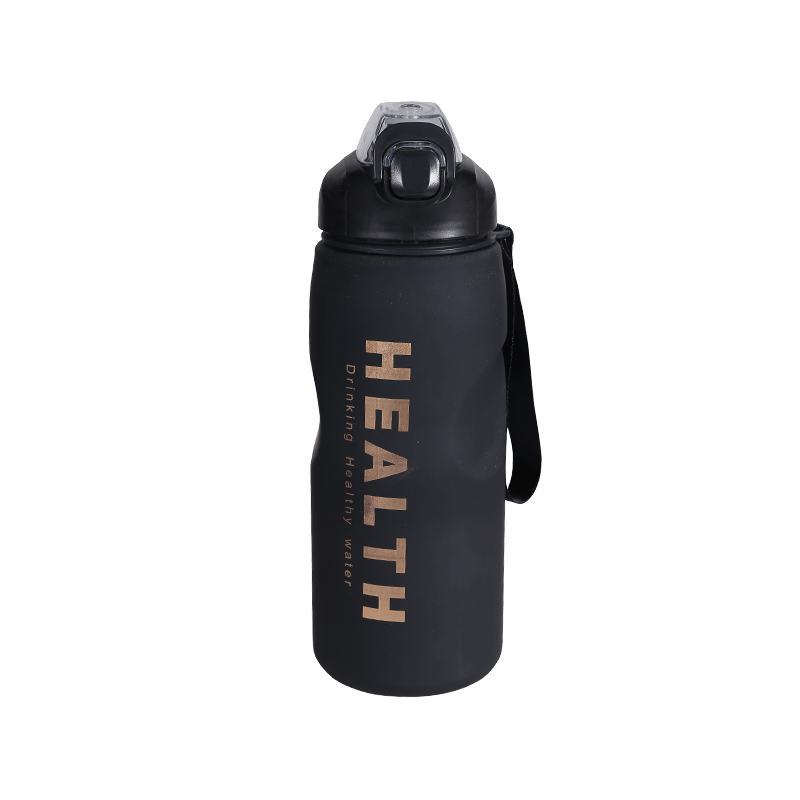Material Structure and Lid Design Influence Seal Quality
Plastic water bottles, especially those produced by a professional Plastic Water Bottle Factory, are engineered with sealing performance as a core function. The ability to prevent leaks largely depends on the interaction between the bottle material, lid construction, and sealing components such as silicone gaskets or threads. High-quality bottles typically use durable PP, Tritan, or HDPE for both body and lid components, ensuring rigidity and stable sealing pressure. Threaded lids, flip-tops, and straw-type caps are carefully designed to fit tightly, reducing gaps where liquid could escape. Some bottles incorporate double-seal gaskets or vacuum-fit lids to enhance sealing reliability, ensuring beverages stay contained even when carried in backpacks or gym bags.

Importance of Precision Manufacturing and Tolerance Control
Reliable sealing also stems from precision in molding and assembly. In modern production environments, particularly within advanced Plastic Water Bottle Factory facilities, CNC molds and automated injection systems are used to achieve highly accurate tolerances. If the threading on either the lid or the bottle neck is imprecise, it can cause micro-gaps that cause gradual leakage. Likewise, poorly fitted caps may fail under shaking or pressure. Premium bottles undergo rigorous quality inspection to detect deformation, flashing from molds, or imperfections in gasket alignment. Such controls ensure the sealing interface remains matched, reducing the risk of leaking during active use, sports training, or transportation.
Sealing Technologies and Gasket Functions
Silicone gaskets play a fundamental role in preventing water leakage. These soft sealing rings compress between the lid and bottle opening, absorbing pressure changes and filling micro-surfaces. Silicone, thermoplastic rubber (TPR), or food-grade elastomers are typically used because they remain flexible and resilient over time. Bottles designed for sports and outdoor activities often feature thicker or dual-layer gasket rings to withstand rapid movement, drops, and temperature fluctuations. In addition, straw-lid bottles incorporate valves and anti-siphon systems that restrict liquid flow unless suction is applied, reducing the chance of spills when the bottle tips over.
Testing Methods for Leak-Resistant Assurance
To ensure performance, reputable manufacturers conduct leak-proof testing before products reach consumers. Drop tests, pressure tests, and shake tests simulate real-world usage scenarios, such as being tossed in a bag, falling during outdoor sports, or being squeezed during exercise. Some bottles undergo hot-water leak tests because heat can slightly expand plastic and affect gasket fit. Higher-quality bottles pass these evaluations with ease, demonstrating that a well-engineered design can remain leak-free even under demanding conditions. In contrast, lower-cost or mass-produced bottles without such testing may suffer from inconsistent sealing, especially after repeated use or cleaning.
Effect of User Handling and Maintenance
Even a high-quality bottle can leak if not assembled correctly. Users must ensure the lid is properly tightened, the gasket is positioned correctly, and no foreign particles are lodged inside the sealing groove. Residual food particles, powder from protein drinks, or dried beverage residue can interfere with gasket seating and create gaps. Furthermore, prolonged exposure to hot water or harsh detergents may degrade gasket elasticity, eventually reducing sealing performance. Cleaning bottles regularly and checking gasket condition helps maintain leak-proof reliability. Some premium models provide removable gaskets for easy replacement and sanitation, prolonging product lifespan.
Design Differences Between Bottle Types
Different bottle styles influence sealing effectiveness. Wide-mouth bottles generally have stronger seal components but require careful lid threading. Flip-top bottles depend heavily on hinge integrity and snap pressure. Straw bottles must balance air-flow functionality with liquid control, often incorporating vent valves to avoid accidental spillage. Exercise squeeze bottles typically do not aim for full leak-proof sealing when squeezed, but they include self-closing valves to decrease spills. Understanding the intended use case helps consumers select a bottle that meets their sealing expectations, whether for hiking, office use, commuting, or gym workouts.

 English
English 中文简体
中文简体 Español
Español